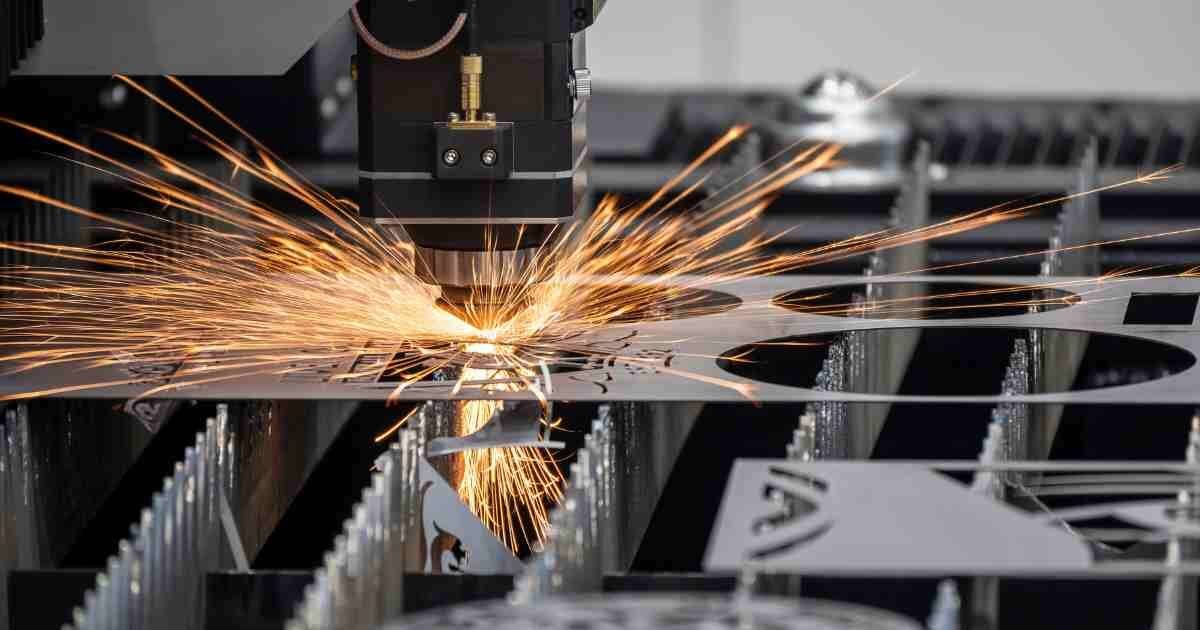
We collect basic website visitor information on this website and store it in cookies. We also utilize Google Analytics to track page view information to assist us in improving our website.
If you’re passionate about metal cutting or just keen to learn more, you’ve landed in the right place.
For over 38 years, Amber Steel has been at the forefront of metal cutting services, specializing in laser cutting, flame cutting, and plasma cutting. Our expertise has carved a niche in this cutting-edge industry, delivering precision and excellence across industrial projects big and small.
In our blog, we’ll share a mix of useful tips, innovative applications, our thoughts on sustainability in steel cutting, and more. Expect stories from the cutting floor, insights into how our processes can streamline projects across industries, and a few lessons we’ve learned along the way.
While we keep some of our trade secrets under wraps, this blog is designed to offer valuable nuggets of wisdom that you simply won't find anywhere else. Whether you’re a professional in the industry or someone fascinated by the possibilities of metal cutting, you'll find something of value here.
So, stick with us as we delve into the finer points of metal work. We’re glad to share our insights and lead discussions that matter to our industry.
How precision metal cutting propels the aerospace industry, from constructing lighter frames to enhancing aerodynamics.
The role of advanced metal cutting in automotive manufacturing, driving innovations in vehicle design and efficiency.
All about the robust and versatile process of flame cutting, ideal for tackling thicker metals with precision and ease.
Discover the art of crafting metal furniture, where cutting techniques meet design to create both functional and aesthetic pieces.
A behind-the-scenes look at the mechanics of metal cutting technologies and the science that makes them tick.
Laser cutting is where extreme precision meets efficiency, allowing for intricate designs and clean finishes.
The critical role of precise steel cutting in developing reliable and intricate medical devices.
How steel cutting supports the oil and gas industry with components that withstand extreme environments and pressures.
Known for its speed and versatility, plasma cutting slices through conductive metals with hot plasma.
Safety first! Tips and insights on maintaining a safe environment while handling powerful metal cutting equipment.
The backbone of construction, where steel fabrication and cutting technologies create frameworks that shape skylines.
Sustainability
A look at sustainability in metal cutting, focusing on practices that reduce waste and conserve energy to protect our planet.

Metal fabrication demands careful handling when working with thin gauge materials. These lightweight, durable metals serve critical roles in automotive, aerospace, and electronics industries. Thin sheets allow manufacturers to build efficient vehicles, complex parts, and modern devices while keeping weight down. Their delicate nature creates specific challenges that require advanced methods and careful planning.
The thinner the metal, the more precision each cut requires. Problems like warping or rough edges can ruin an entire component. Achieving clean, accurate cuts means understanding how thin metals behave under different cutting processes. It also requires preventing common issues before they occur. Proper technique becomes more important as material thickness decreases.
This guide examines the challenges of cutting thin gauge metals and provides practical solutions for fabricators. You'll find proven methods to improve your work quality and avoid costly errors, whether you're new to thin metal cutting or looking to enhance your current results.
Thin gauge metals often warp because they react strongly to heat during cutting processes. When using high-temperature methods like laser or plasma cutting, uneven heat can distort the metal's shape. This warping affects the structural integrity and creates waste in production.
Manufacturers working on precision projects must monitor and control heat levels carefully.
Burrs—the unwanted sharp edges that remain after cutting—frequently occur with thin sheets. These defects happen due to incorrect cutting settings, worn tools, or improper focus alignment. Industries like aerospace and electronics require completely smooth edges for both function and appearance, making burr prevention essential.
Thermal cutting methods create zones where heat changes the metal's properties. In thin materials, these zones often reach deeper than in thicker pieces. Such changes can weaken the metal or make it unsuitable for critical applications in aviation or medical devices. Managing these heat zones becomes crucial for maintaining quality.
Cutting equipment needs precise calibration for thin metals. Poor maintenance or misaligned beams result in uneven cuts and material waste. Modern systems, including auto-focus laser equipment, help maintain consistent quality. Regular equipment adjustments ensure accurate cutting results.
Thin metal sheets can easily sustain damage during routine movement and setup. Without proper support and clamping systems, materials may shift while cutting, causing alignment problems. These handling challenges increase both waste and safety concerns. Following careful handling procedures helps prevent expensive mistakes.
Setting the right cutting parameters proves essential for thin gauge metals. Proper adjustment of speed, power, and focus minimizes material distortion. For example, reduced cutting speeds help prevent heat buildup, while correct beam focus produces cleaner cuts. Advanced CNC systems allow operators to monitor and adjust settings in real time, maintaining consistent quality.
Investment in precision cutting tools designed for thin metals improves results significantly. Laser cutters with auto-focus features adjust to material variations automatically. Similarly, plasma cutters with fine nozzles create smoother edges, reducing post-processing work.

Cooling systems, like air or liquid cooling, help control heat during cutting, preventing warping and distortion. Waterjet cutting, which adds no heat, works especially well for metals sensitive to temperature. For thermal methods like plasma or laser cutting, compressed air cooling helps prevent localized overheating.
To reduce burrs, maintain sharp cutting tools and keep equipment in good condition. Adjusting feed rates and using quality components, such as fine-grain nozzles, improves cut quality. Many shops now include deburring equipment in their process, reducing manual finishing work.
Robotic arms and vacuum lift systems provide reliable solutions for handling thin metals. These systems reduce human error and protect delicate sheets from damage during movement. Automated clamping systems keep materials firmly in place throughout cutting, improving accuracy.
Modern software enables better cut planning and execution. Nesting programs optimize material use by arranging parts efficiently, reducing waste. Simulation tools let fabricators test cutting strategies before production, ensuring better results with less trial and error.
Car manufacturers depend heavily on thin gauge metals. They use laser-cut aluminum sheets for body panels, doors, and interior components. These lightweight materials help create more efficient vehicles while maintaining strength. Precise cuts matter because small flaws can affect aerodynamics and assembly fit.
The aerospace sector relies on thin titanium and aluminum alloys for high-performance components. Laser cutting creates precise cuts for wing panels, support structures, and engine parts. Fabricators must avoid any rough edges, as even small imperfections can affect aircraft performance and efficiency.
Electronics manufacturing uses thin gauge metals for numerous components. Manufacturers work with stainless steel and copper sheets to produce circuit boards, battery housings, and device parts.
Modern buildings increasingly feature thin metal sheets in facades, decorative elements, and roofing. Plasma cutting suits these applications because it handles large sheets efficiently. Advanced computer programs help create complex designs while minimizing waste, meeting both practical and aesthetic requirements.
Medical device producers need thin gauge stainless steel for surgical instruments, implants, and testing equipment. They prefer laser cutting for its high precision and ability to meet strict health standards. Cut edges must be perfectly smooth to prevent contamination and ensure patient safety.
The renewable energy industry uses thin gauge metals in solar panels and wind turbines. Workers precisely cut copper and aluminum sheets for solar cell conductive layers to maximize power generation. Wind turbine components made from thin metals require exact cutting to withstand environmental stresses.
Modern laser cutters transform thin metal fabrication processes. These machines feature auto-focus and power control systems that adjust to material thickness variations. This prevents edge roughness and ensures consistent cut quality. New fiber lasers work particularly well with reflective metals like aluminum, cutting them efficiently without damage.
Smart computer systems improve metal cutting efficiency. These systems learn from previous operations to identify potential issues, like tool wear or material warping, before problems occur. The technology also reduces waste by optimizing part layout on metal sheets and maintaining steady production flow.
New software helps prevent production problems before cutting begins. These programs let operators test different cutting approaches virtually, finding optimal methods. By showing heat distribution and stress points, manufacturers avoid mistakes and reduce test runs.
Advanced handling equipment prevents thin metal damage. Robotic arms with vacuum or magnetic grips move materials safely, while automated feed systems maintain proper alignment during cutting. These improvements protect materials and increase production speed.
Internet-connected devices enhance metal cutting operations. These smart tools track machine performance, material conditions, and cutting accuracy continuously. When issues arise—such as tool wear or temperature changes—the system alerts operators immediately, reducing downtime and maintaining quality.
Modern factories use advanced systems to check cut quality. Automated cameras and sensors examine cuts as they happen, measuring edge quality and finding any defects. These systems track measurements and spot problems without slowing down production. Digital reports help shops find ways to improve their work and maintain quality standards.
Good thin gauge cutting depends on keeping equipment in top condition. Smart systems monitor tool wear, beam performance, and overall equipment health. They can predict when parts need replacement before quality suffers. This planning helps prevent unexpected shutdowns and keeps production running smoothly.
Even with advanced technology, operator skill makes a big difference in cutting success. New training programs use virtual reality to teach proper techniques without wasting materials. Operators can practice difficult cuts and problem-solving safely. Regular training updates help teams work better with new equipment and methods.
Working with thin metals presents various challenges, from warping and edge quality to heat management. However, modern technologies and methods help manufacturers overcome these issues to achieve better results and efficiency. Today's successful operations combine advanced tools with technical expertise.
New equipment like self-adjusting lasers, intelligent computer systems, and automated handling solutions help shops work more precisely and quickly. Alternative cutting methods resolve traditional problems while improving product quality and reducing material waste.
Success depends on understanding your specific requirements. Different industries—from electronics to aerospace—need different approaches. When handled correctly, thin metals provide flexibility and performance advantages that other materials cannot match.
Transform your thin metal cutting operations today. Contact us to access our specialized expertise, advanced equipment solutions, and proven techniques that match your specific production requirements. Our team helps manufacturers across industries achieve precision results while reducing waste and operational costs.